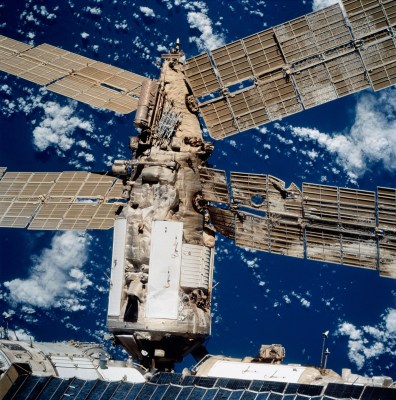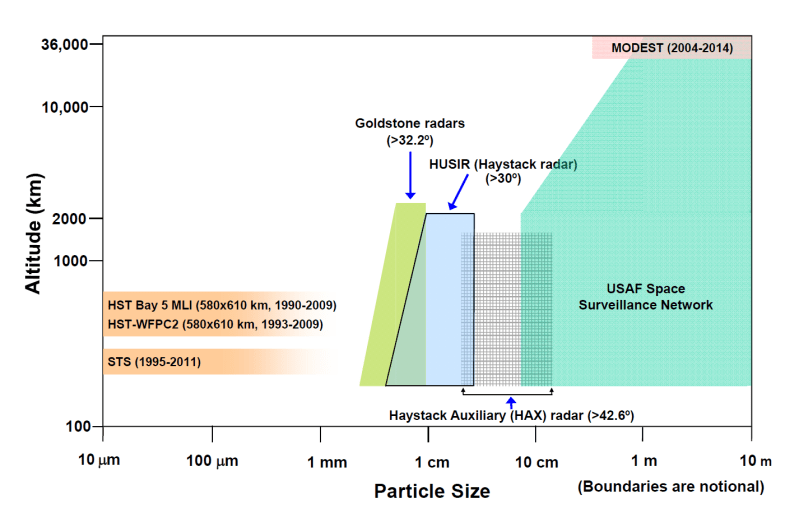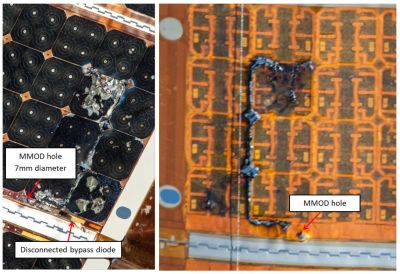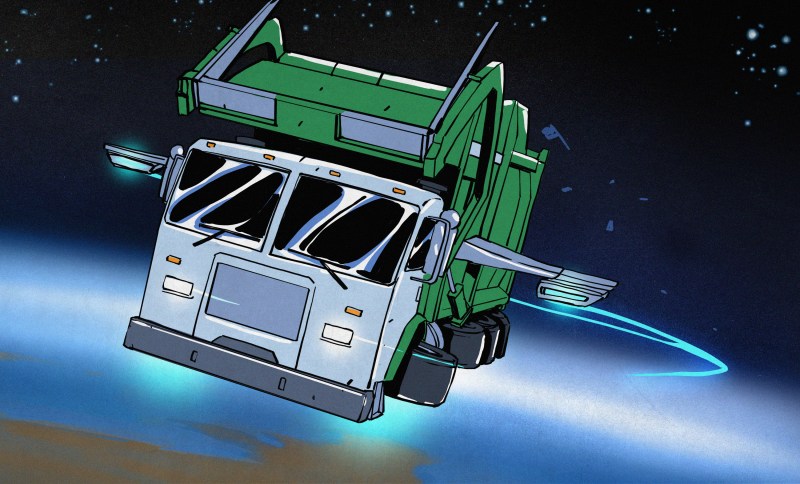Picture in your mind a big parking lot with 131 million cars on it. Now imagine that they are spread out over the entire Earth’s inhabited areas. Although still a large number, it is absolutely dwarfed by the approximately 1.47 billion cars registered and in use today, with room to spare for houses, parks and much more. The 131 million represents the total number of known and estimated space debris objects in Earth orbit sized 1 mm and up, as per the European Space Agency. This comes on top of the approximately 13,200 satellites still in Earth orbit of which 10,200 are still functional.
Now imagine that most of these 131 million cars of earlier are sized 10 cm or smaller. Spaced out across the Earth’s entire surface you’d not be able to see more than at most one. Above the Earth’s surface there are many orbital planes and no pesky oceans to prevent millimeter and centimeter-sized cars from being spaced out there. This gives a rough idea of just how incredibly empty Earth’s orbital planes are and why from the International Space Station you rarely notice any such space debris until a small bit slams into a solar panel or something equally not amusing.
Cleaning up space debris seems rather unnecessary in this perspective, except that even the tiniest chunk travels at orbital velocities of multiple kilometers per second with kinetic energy to spare. Hence your task: to chase down sub-10 cm debris in hundreds of kilometers of mostly empty orbital planes as it zips along with destructive intent. Surely this cannot be so difficult with lasers on the ISS or something?
Orbital Delta V

When it comes to achieving and maintaining an orbit, velocity is everything. Go too fast (escape velocity) and you will zip out of the orbit into the darkness of space. Go too slow and you’ll find yourself becoming intimately familiar with the intricacies of atmospheric plasma formation. This means that for space debris to become a problem, it needs to get this correct amount of initial velocity relative to Earth from somewhere, which generally happens as a result of a rocket launch discarding pieces that remain in orbit, catastrophic satellite or rocket failure, a dropped tool by an astronaut, or even the use of anti-satellite (ASAT) weapons creating a shower of particles that may or may not achieve orbit.
Once in orbit, the altitude determines just how stable that orbit is, with atmospheric drag being one of the prime factors in orbital decay. For debris in fairly low orbits close to the Karman line (~100 km altitude) atmospheric effects are quite noticeable and debris in these orbits will decay rapidly, sometimes burning up in as little as hours to weeks. Other orbits will experience some atmospheric drag, but only so slight that the decay period is measured in years or decades. For the International Space Station (ISS), its altitude is maintained between 370 and 460 km, with atmospheric drag decreasing its altitude by about 2 km per month.
As currently the largest man-made object in Earth orbit, the ISS’ atmospheric drag is of course rather significant. The Japanese H-2A rocket’s upper stage that launched the GOSAT satellite into space in 2009 has continued to passively orbit Earth since then at an altitude far above that of the ISS. Although this type of object may one day re-enter the Earth’s atmosphere, it would be far in the future, with every active mission doing their utmost to not get hit by the thing.
Meanwhile there is a lot of sub-10 cm debris zipping around in orbit, for which their orbital decay would be insignificant due to their small size, and their exact position uncertain.
Scheduling A Meeting

For something large like a rocket upper stage, we are able to track the objects using ground- and space-based observations. This knowledge is what recently allowed a company called Astroscale to get a spacecraft to a distance of about 50 meters from the GOSAT mission’s upper stage as part of the ADRAS-J space debris mission. Even this took careful orbital mechanics, as the reconnaissance spacecraft was maneuvered closer to its unsuspecting target. In future missions this approach should theoretically end up with the prey being pushed to a fiery demise in the atmosphere.
An important aspect to note here is that with all cases of orbital rendezvous, it’s a nerve-wrecking experience even when you control all aspects of both spacecraft, such as when a spacecraft docks with the ISS. Since each will appear to be effectively motionless relative to each other it seems an easy task, as with moving closer to another person on the surface of the Earth. Instead the experience is closer to trying to meet up with another person while both of you are skydiving. Even the slightest change in your trajectory can send you careening into the other person, far away from them, or have you begin to spin uncontrollably.
Tiny Needles In A Big Haystack

As the above graphic makes clear, our ability to detect space debris is highly dependent on its size and altitude, with our ability to detect smaller debris quite limited. For anything that’s smaller than something like an intact rocket stage, we rely heavily on statistics to predict how many of such objects are likely in orbit. This means that most orbital debris management relies on passive defenses, such as the Whipple shield which provides a ballistic armor to dissipate the energy of an impact.

As the number of objects in orbit and with it debris increases, such defenses will be increasingly tested, and parts of spacecraft which cannot be protected – such as solar panels – will increasingly get hit by said debris. This is where we enter the territory of the infamous Kessler syndrome. Imagine these increasing strikes doing more damage, which causes parts of spacecraft to be destroyed and produce more debris, which in turn will damage and destroy additional active orbital objects, which will produce more debris, ad nauseam.
The point here is not that Earth’s orbits will be ‘full’, but rather it would turn the orbital planes above Earth’s surface into the equivalent of walking into a large room that seems empty, but out of seemingly nowhere a few specks of metal and maybe a bolt will suddenly impact into your body with a few km/s. If you know that this is the case, the higher this chance gets, the fewer people will be inclined to set foot into said room.
In a 2022 review article by Barış Can Yalçın et al. in Frontiers in Space Technologies the issues of space debris is examined, along with a series of methods that are being investigated as potential debris removal methods. These include ways to ‘nudge’ the target object in a variety of ways, others actively seek to capture the target with a harpoon, net, foam, etc. There is also the idea to use lasers to destroy the target, which runs into many practical concerns, not the least of which is the amount of energy required for a usable laser system.
Friggin’ Lasers On Spacestations

diode is disconnected due to MMOD impact. (Credit: Hyde et al., 2019)
Using laser systems has seen a number of proposed systems, including a few that would be mounted on the ISS. The wildest idea here has been to use a ground-based laser that would heat orbital debris to change its orbital trajectory as a so-called laser broom. Although a lot of such projects have seen some level of funding and intended deployment dates, to this day it has remained a purely theoretical matter. With the disposal of rocket stages and defunct satellites much better regulated these days than a few decades ago, it seems the sense of urgency has deflated along with it.
Fact of the matter remains that orbital debris remains a hazard, however. One only has to observe the impacts on the ISS to get a sampling of the debris density in just low Earth orbit. For a sense of scale, even a relatively small object with a weight of 50 grams impacting with a relative speed of 15 km/s imparts the equivalent energy of a 1 kg of TNT. The generally much smaller debris that hits the ISS on a regular basis is not quite as destructive, but its traces are quite distinctive, from holes in the solar panel to visible impacts in the windows.
There would seem to be three distinct approaches to orbital debris: one is based around prevention and disposal of large debris, while another focuses on active defense, such as equipping a space station with sensors and (laser) turrets to take out debris. The third would be the fairly random sweeping of orbit, to actively or passively track down and neutralize debris, especially the type that is generally not tracked today.
What is clear is that we do not lack options to deal with orbital debris, but the complications of orbital mechanics and the low debris density makes for a fun game of finding needles in haystacks. Except that these needles are super small and can draw serious blood.
















Humanity’s record for cleaning up our messes is a very large data set
that does not bode well for our near earth orbital environment
especialy considering the monitisation,militerisation,and politisisation
of space that is completely unregulated and perhapps unregulatable
and if it was me,I would happily try and turn all of our space stuff into
a nice planetary ring system….astro engineering bling for our planet
Yeah the best option is to leave this total non-problem alone and stuff socks in the mouths of the noisy technocrats whose entire reason for existence is finding non-problems to blow out of proportion and hysterically shriek about and then generate revenue and jobs programs for generations off the somehow-worsening non-problem that they never solve (because solving it would put them out of work). This seems to be the fastest-growing sector in the US economy at the moment and it’s entirely parasitic
“off the somehow-worsening”
yes, it’s strange how this problem is somehow worsening magically. Who’d have thought that when China and Russia launched ASAT tests against satellites in LEO that it’d cause a debris problem such that ~20% of collision warnings are due to those two incidents alone? Totally unexpected, but at least we can guarantee that those two nations won’t do it again since they’ve been told about the dangers and they’re super-reasonable, and the US is famously super-stable and so the guidelines entered into 2 years ago could never possibly be repealed by someone thinking of showing off capabilities to other nations.
Of course… But technocratic problems also worsen (and their depiction worsens) because that creates opportunity for will to power for technocrats, as well as financial and status benefits. They never go away, and the solutions proffered are always very revealing in that they are not meant to take significant bites out of the problem.
Also how many real incidents resulted from that event? Not red-faced warnings from technocrats but actual incidents
Sorry but there are problems that must be delt with proactively, rather than reactively.
This is a perfect example of how capitalism doesn’t work for every problem.
Capitalism requires the freedom to fail, so the survivors can reap the rewards.
Do. Fail. Learn.
But sometimes, zero failures are acceptable.
We won’t ever GET zero failures, but a system that allows them as part of a process doesn’t “work”.
This is one of those situations.
I was trying to dance around thing here a bit, but it might help to be direct:
A lot of this is politics-speak. It’s like with the National Ignition Facility – they talk about “studying ignition for a future of clean energy” because “studying ignition to replace our nuclear stockpile” can get a negative reaction. But the people involved and the people funding it know exactly what’s going on.
Saying “working on methods to manage and deorbit space debris” sounds a lot better than “develop techniques to ensure that an ASAT weapons attack from an enemy can’t cripple our space infrastructure for decades.” Again, to be clear, two ASAT weapons tests currently generate around 20% of the collision warnings, and the first one has already taken out another satellite. The question isn’t “is it a problem” but “could a malicious actor make it a problem” and the answer is “oh my dear lord yes.”
The Chinese ASAT test debris destroyed a Russian satellite 6 years later. It hasn’t been that long since the Russian one.
I worked space projects in the USAF for 16 years and as a contractor for 20 more. Orbital speeds are around 7 Km/second. Collisions often happen at 10 Km/second. The Space Shuttle window had three very strong glass layers. A paint fleck about 3/8 inch size hit the window from an unknown angle, punched through the first window leaving a hole, and knocked a big chunk out of the second window. Probably a loud bang too. No damage on the third window. If all windows had broken, the shuttle would have had an explosive decompression, likely killing the astronauts not in a air-tight spacesuit. No time to go find your helmet.
No, you cannot hold up a pillow and catch the debris. Way too much energy. If you try to slow the object down, it just falls closer to the earth, gaining speed and thus going into a new unknown orbit. You have to either slow it down so it falls directly to the Earth (Very tough), or get it low enough so the atmosphere at 250 Km above the earth can start to drop the new orbit apogee every time it hits the atmosphere. Definitely not an easy thing to do.
Using a laser to ablate material from the object and thus create a thrust away from the laser location only works if you are in orbit ahead of the object. If shot from the ground into space, the object will be pushed higher and you now have a new orbit again. Not good at all. I did modeling and simulation of these problems while a contractor. You have to have an amazing computational intense calculation to even try to predict the location of an object. SGP4 at best has an error of around 5 Km and that rises rapidly as the orbital data time increases. There are better codes, but likely highly classified. No idea on their accuracy / inaccuracy.
And those movies where the space guys see the rocks or space junk coming at them? Nope, at 7 or 10 Km/second, you will never know where the object is coming from, or how you just died.
Recently an old satellite blew up, possibly by a battery failure. It is a tough environment out there, and the Van Allen belts with the trapped high energy particles is really nasty. Things happen and will continue to happen.
I do hope we can find a reasonable solution, but this is a very difficult problem to solve.
So uh, do you have a rebuttal to the facts of the situation or just insults?
Total non problem?
Tell that to Iridium 33
https://en.wikipedia.org/wiki/2009_satellite_collision
We’re the reason cats self-domesticated. It’s to clean up the mice and rats we tended to draw with unkempt trash pile near our ancient living area.
Maybe we need to get some space cats to clean up the space trash?
“Maybe we need to get some space cats to clean up the space trash?”
You are familiar with what happened to the cat on “Red Dwarf”, right?
Space cats? Did I hear Space Cats?! :D
https://www.youtube.com/watch?v=BvPHsYlj6MI&t=30s
The classic engineering conundrum – fix a problem, or work around it?
If you fix the problem it makes all of your space craft lighter, cheaper and easier to build – but it’s a huge amount of work. Also the longer you procrastinate the worse the problem gets.
If you work around the problem by adding shielding layers then every space craft is heavier. Doesn’t scale well as weight impacts cost and mission feasibility for every mission. But you can at least do it within the scope of your mission, unlike sweeping Earth orbit!
Then you mix in multiple users – you sweeping orbit helps everybody, so you don’t want to shoulder the whole cost, right?
Seems like there should be a cost benefit analysis somewhere so we can work out where each approach goes, and how much it really costs in the long term. Easier access to space has lots of benefits, but is it enough to make a cleanup worthwhile?
Then again, cats are well known for knocking stuff off of shelves and countertops, they’d probably do a good job knocking stuff out of orbit.
B^)
i think one of the most amazing things about humanity and life in general is that it’s reactive. we haven’t dealt with the kessler syndrome yet because we haven’t experienced it yet. that is, i suppose, short-sighted. but once we’ve created the catastrophe, there will be a lot of human energy spent on reacting to it. catastrophes are the norm, as is coping with those catastrophes.
we can cope in advance: use satellites to gather knowledge as long as it is possible, but make sure you don’t depend on them for anything you are not willing to dismiss on very short notice
Looks like this issue got some consideration in the 70’s:
https://www.youtube.com/watch?v=_zBU0G2B2D4
I fear it would be more practical if future satellites and space shuttles were fitted with a micro meteroites shield.
Perhaps made of a soft material that would cushion and absorb the projectiles.
Maybe implemented using three layers. Inner hull, shield, outer hull.
Perhaps using a type of foam or wool, not sure.
I’m just a layman, after all.
it’s literally in the article
“This means that most orbital debris management relies on passive defenses, such as the Whipple shield which provides a ballistic armor to dissipate the energy of an impact.”
One, it has to be unreasonably low-mass. Anything that coats your entire craft in several layers (which will have to be separated by empty space, look up “whipple shield”) adds a lot of mass. Heck even a coat of paint adds too much mass sometimes–that’s why the space shuttle’s big fuel tank was white at first and then was changed to orange.
Two, physics gets a bit different when projectiles are moving ten kilometers a second. Cushioning or other concepts like that become meaningless. Basically you’re being pelted by so much raw kinetic energy that it’s like tiny bombs exploding on your hull if you stop them completely, or else they just shoot straight through and leave a hole which is sometimes preferable. This is part of the reason for the empty space behind the whipple shield above.
It’s a tough old problem. Luckily space is nothing if not very big, so often the best policy is to rely on the extreme unlikelihood of two orbits intersecting.
“Space junk” is mostly a science fiction concept thus far, although it has messed things up once or twice. Hey, space is dangerous. It is utterly unreasonable to expect perfect safety records in such extremity and remoteness. NASA used to know this during Apollo, and forgot during the (mostly stupid and publicity-oriented) space shuttle years. This is part of what led to their current total irrelevance
““Space junk” is mostly a science fiction concept thus far, although it has messed things up once or twice.”
Not exactly sure what you mean by “science fiction concept thus far” – for a decent-sized object like the ISS, it’s a relatively regular risk, with collision avoidance maneuvers happening about 1-2 times/year. And of course debris has been a bigger issue in the past few years due to Russian satellites “mysteriously exploding,” causing the crew to shelter twice in the past 3 years.
It’s definitely true we’re not near Kessler or anything, but to be clear, a significant portion of the space junk isn’t due to humans like, littering or something: it’s due to a few specific nations (cough) thinking it’s totes fine to test blowing crap up in LEO, so depending on how feckless they want to be, it could easily escalate to “very bad” very quickly.
Seems under control. Ooo is there another intrigue about Russia?? Please tell me more, those are always entertaining
You and I have different definitions of “under control” if 2/3 of the major space powers are OK with ASAT LEO tests and the third only banned it via an administration which might be out of power soon.
“It’s, like, litrully totes fine, y’all! (cough)”
Have self-respect
I do! That’s why I don’t care what you think of my language.
This story just seems to go round and round.
Someone is fishing for a job
Planetes!!!!!
Big ol’ blocks of Aerogel. Mop it all up. 🙂
“As currently the largest object in Earth orbit”
Uh, Mr. President, that’s not entirely true.
So, we need to clean up all that airless space…
We need a vacuum cleaner.
OK, OK, I’ll see myself out.
One silly question, are all those spaces junks still owned by the country that launched them? imagine bringing back the H-2A rocket just for fun and decorate your home!
I believe they are, and if you were to find an economical way to bring them back, they’d probably claim them. But if you wanted to sue them for any damage they do, good luck with that!
MMOD – MicroMeteroids and Orbital Debris
https://www.nasa.gov/centers-and-facilities/white-sands/micrometeoroids-and-orbital-debris-mmod/
Instead of head-on collisions… Why not sneak up from behind the bigger ones and grab ’em, say magnetically or scoop…. You know there orbits if tracking them… When the space truck has loaded tons of space junk, just de-orbit with it, or change the orbit enough to let the atmosphere do the rest in a few days…
Garbage Truck goes to space